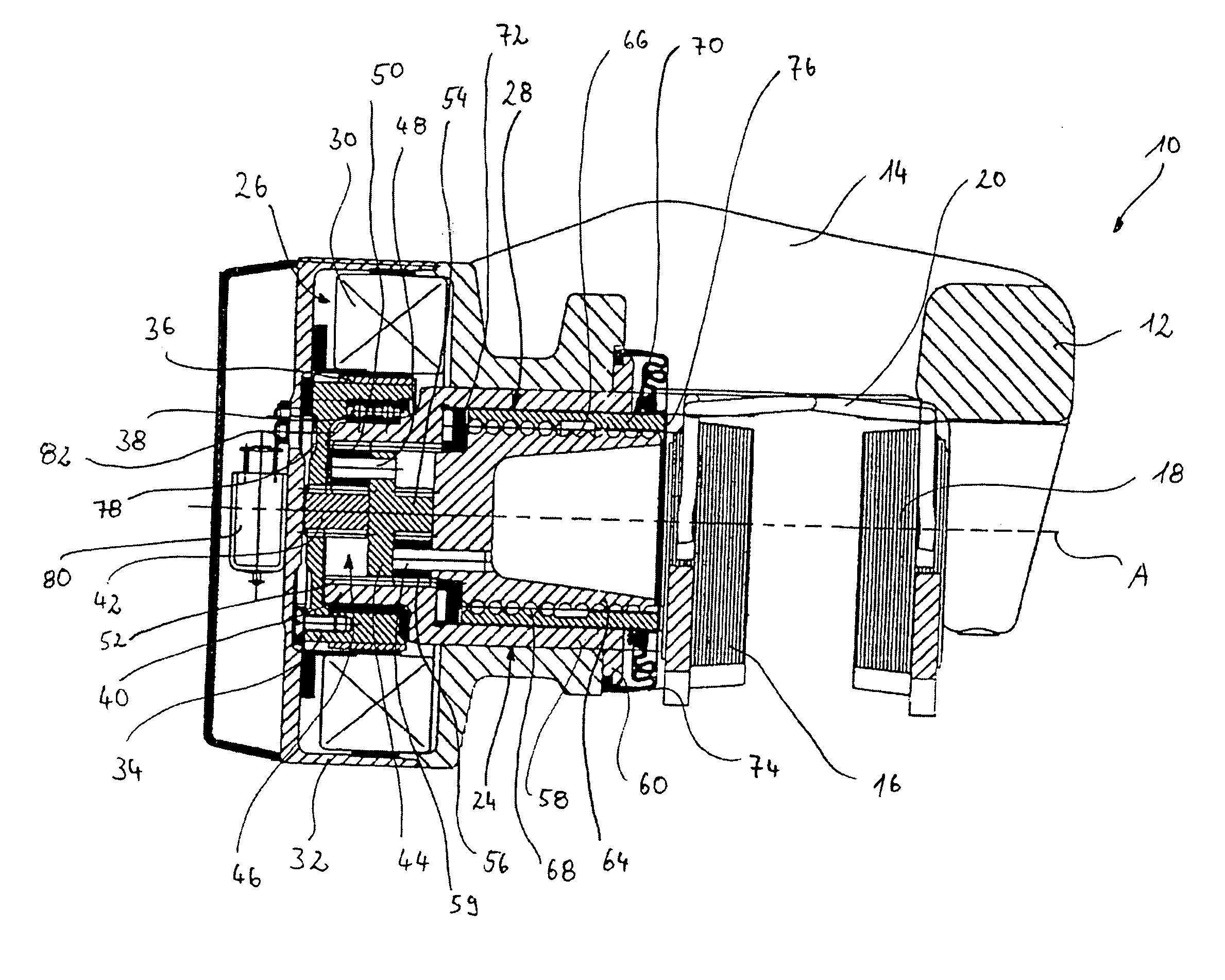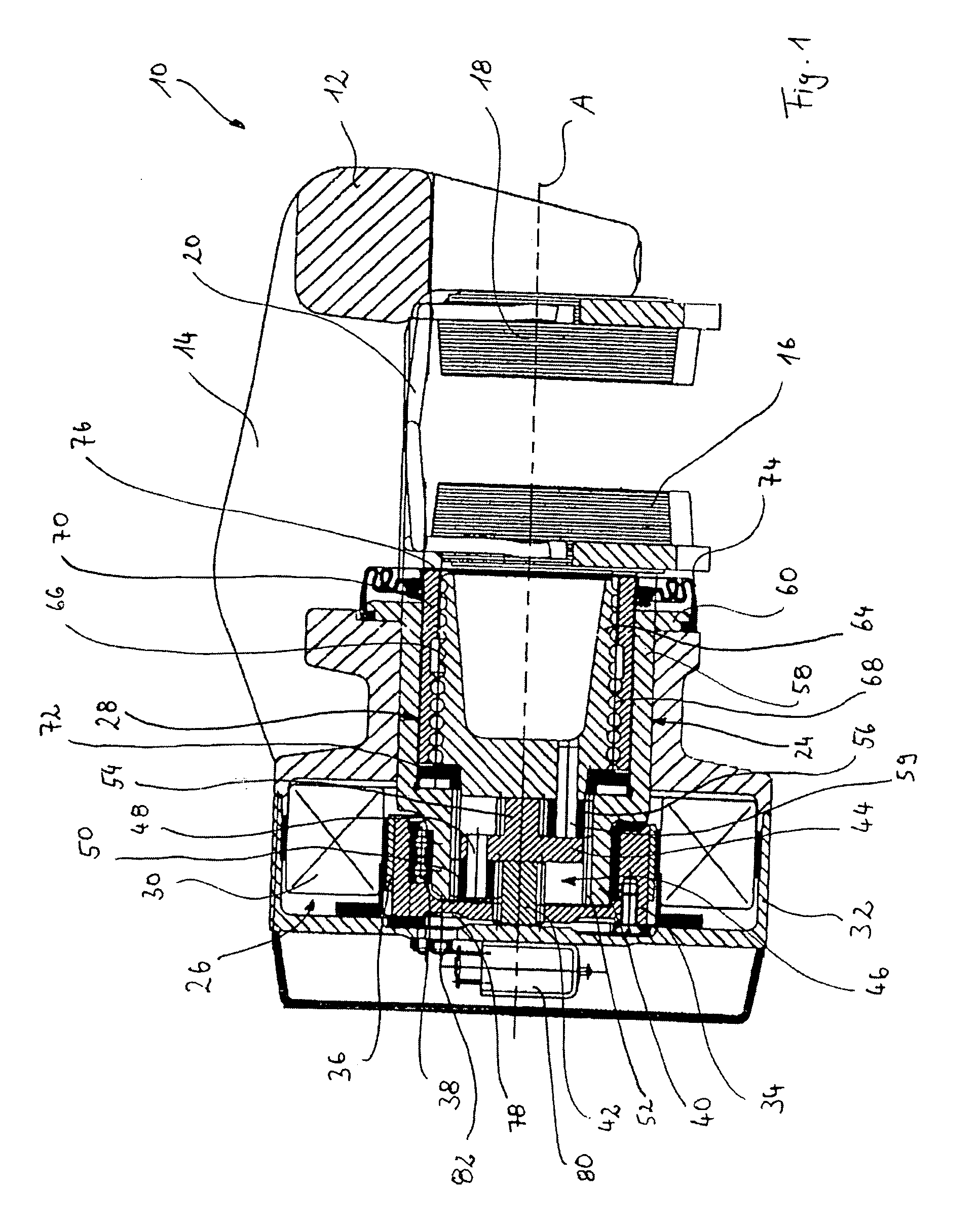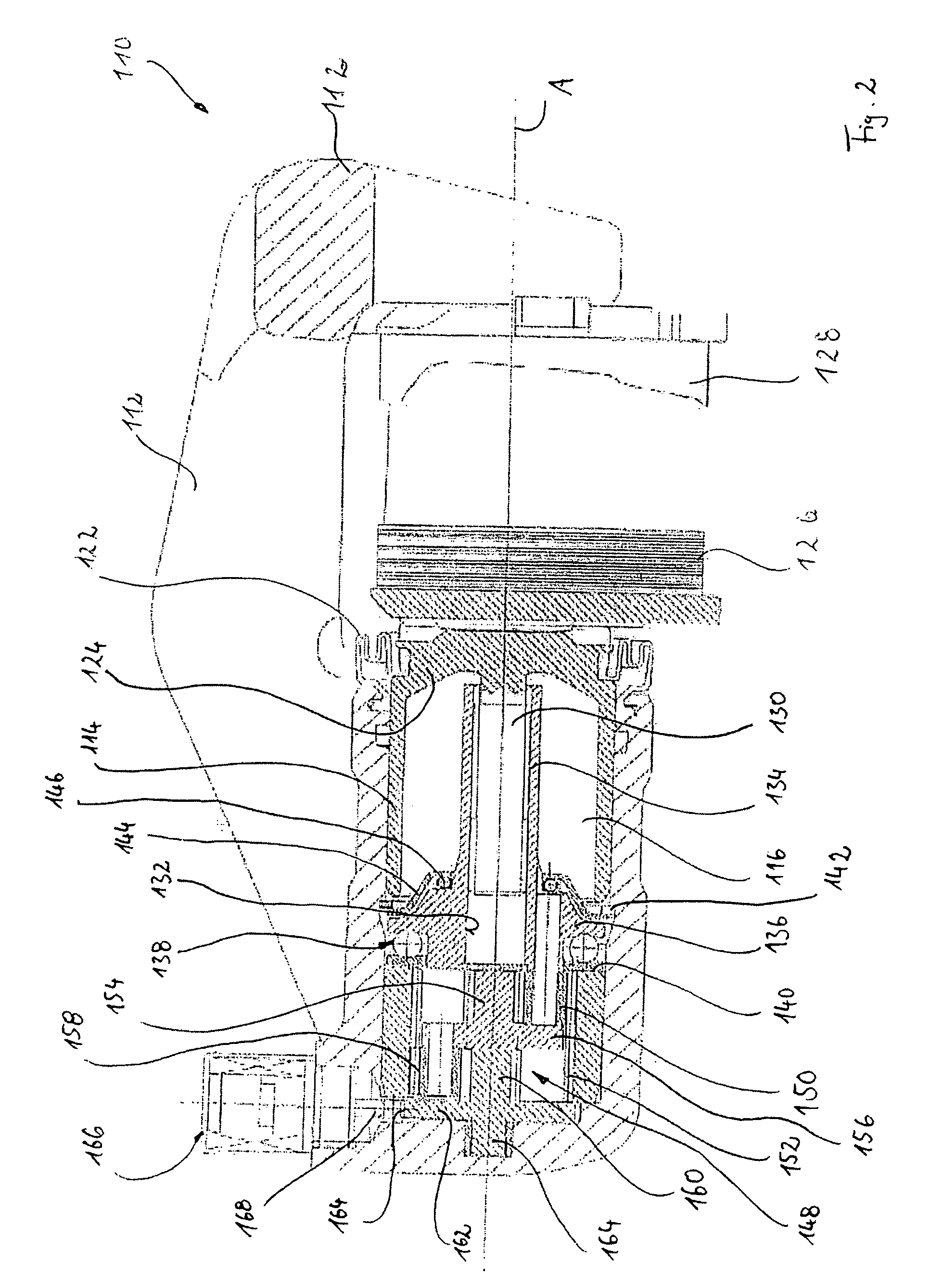Vehicle brake and method for actuating a vehicle brake
a technology for vehicle brakes and brakes, applied in the direction of brake systems, axially engaging brakes, electric vehicles, etc., can solve the problems of requiring electric motors and an additional load on the electrical system, and the entire arrangement is relatively complicated, so as to achieve the effect of fast and reliable activation of the parking braking function
- Summary
- Abstract
- Description
- Claims
- Application Information
AI Technical Summary
Benefits of technology
Problems solved by technology
Method used
Image
Examples
first embodiment
[0027]In FIG. 1 a vehicle brake according to the invention is shown in longitudinal section and generally denoted by 10. The vehicle brake 10, as will be additionally explained below in detail, is actuated electromechanically. It takes the form of a disc brake of the floating caliper type. For this purpose, the vehicle brake 10 comprises a housing 12 with a floating caliper region 14. In the floating caliper region 14 a first brake lining 16 and a second brake lining 18 are disposed. The two brake linings 16 and 18 are resiliently connected to one another by a release play spring 20, wherein the release play spring 20 attempts to push the two brake linings 16 and 18 apart from one another. Accommodated between the two brake linings 16 and 18 is a brake disc (not shown), which is connected at its radially inner region to a vehicle wheel (likewise not shown) that is to be braked. The brake lining 18 is fitted on the floating caliper region 14 of the housing 12 so as to be displaceable...
second embodiment
[0036]In FIG. 2 a vehicle brake according to the invention is denoted by 110. The vehicle brake 110 comprises a housing 112, in which a brake piston 114 is guided displaceably in the direction of a piston longitudinal axis A. The brake piston 114 with the housing 112 encloses a fluid chamber 116, to and / or from which hydraulic fluid is feedable and / or dischargeable through a non-illustrated hydraulic fluid line of a hydraulic fluid circuit. The brake piston 114 guided in the housing 112 is connected at its, in FIG. 2, right front end by bellows 122 to the housing 112, so that the housing interior is screened off to prevent dirt from penetrating. Disposed on the front end 124 of the brake piston 114 is a brake lining 126, which is displaceable in the housing 112. Disposed opposite the brake lining 126 is a second brake lining 128, which is likewise displaceable in the housing 112. The brake linings 126 and 128 are supported in the housing 112 in accordance with a conventional floatin...
fourth embodiment
[0053]In the fourth embodiment according to FIGS. 5 to 7, the blocking element 334 is likewise connected by a planetary gear 360 to the detent disk 362. The planetary gear 360 comprises a sun wheel 384 fitted in a rotationally fixed manner on the blocking element, three planet wheels 382 meshing with the sun wheel 384 and supported by bearing pins 390 rotatably on the detent disk 362 serving as a planet carrier, and a sun wheel 386, which is fitted in a rotationally fixed manner in the housing 312 and with which the planet wheels 382 mesh.
[0054]A further characteristic feature of the fourth embodiment according to FIGS. 5 to 7 is that the detent disk 362 is connected by a spiral spring 388 to the housing 312. The spiral spring 388 is tensioned when the brake piston 314 is displaced towards the non-illustrated brake disc and leads to the build-up of a resetting force, which upon release of the brake piston 314 returns the brake piston 314 actively to its basic position shown in FIG. ...
PUM
 Login to View More
Login to View More Abstract
Description
Claims
Application Information
 Login to View More
Login to View More - R&D
- Intellectual Property
- Life Sciences
- Materials
- Tech Scout
- Unparalleled Data Quality
- Higher Quality Content
- 60% Fewer Hallucinations
Browse by: Latest US Patents, China's latest patents, Technical Efficacy Thesaurus, Application Domain, Technology Topic, Popular Technical Reports.
© 2025 PatSnap. All rights reserved.Legal|Privacy policy|Modern Slavery Act Transparency Statement|Sitemap|About US| Contact US: help@patsnap.com



